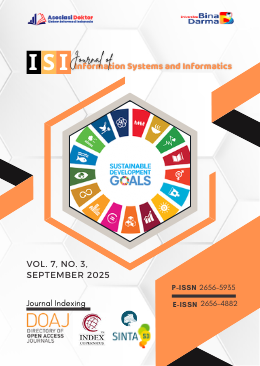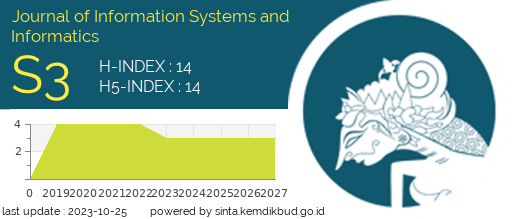Development of an Expert System for Vehicle Breakdown Assistance
Abstract
Vehicle breakdowns are a growing problem worldwide, often caused by overheating, oil leaks, battery problems, flat tires, fuel system failures, and other issues. These incidents frequently result in delays, safety hazards, and costly repairs. Existing systems mainly focus on locating nearby mechanics but lack self-diagnostic capabilities. This study presents a mobile-based expert system that offers step-by-step repair instructions, troubleshooting flowcharts, and safety guidelines. The system integrates ensemble machine learning models and rule-based inference to empower users to independently diagnose and resolve minor vehicle faults. The system is designed with offline capability and a user-friendly interface, this tool ensures accessibility and reliability, especially in remote areas. Initial testing demonstrated a classification accuracy of 88% in diagnosing common faults, confirming the system’s effectiveness and potential for real-world deployment.
Downloads
References
T. P. Force, Road accident. Dodoma: Tanzania Police Force, 2024.
O. Kennedy, National Transport and Safety Authority. Nairobi, 2023.
Kumaar, “On road vehicle service finder,” Int. J. Sci. Res. Sci. Technol., vol. 3, 2019.
NBS, National Bureau of Statistics. Dodoma: Ministry of Work, Transport and Communication, 2024.
M. Nivetha, “Vehicle breakdown assistance,” Int. J. Cybern. Inform. (IJCI), vol. 2, 2021.
OCGS, Vehicle breakdown. Dodoma: Office of the Chief Government Statistician, 2023.
O. O. Adetunji, “Automotive servicing and breakdown assistance system,” Glob. J. Eng. Technol. Adv., vol. 2, 2023.
P. M. P, “On road vehicle system,” Int. J. Eng. Appl. Sci. Technol., vol. 2, 2020.
RTMC, South African Road Traffic Management Corporation. Johannesburg: Road Traffic, 2023.
J. Fish, D. R. Moulton, and K. Gray, “Graphical user interface with on board and off-board resources,” U.S. Patent 9,299,197, Mar. 29, 2016.
L. van der Maaten and G. Hinton, “Visualizing data using t-SNE,” J. Mach. Learn. Res., vol. 9, pp. 2579–2605, 2008.
S. L. Oh, J. Vicnesh, E. J. Ciaccio, R. Yuvaraj, and U. R. Acharya, “Deep convolutional neural network model for automated diagnosis of schizophrenia using EEG signals,” Appl. Sci., vol. 9, no. 14, p. 2870, 2019.
M. Daily, S. Medasani, R. Behringer, and M. Trivedi, “Self-driving cars,” Computer, vol. 50, no. 12, pp. 18–23, 2017.
Z. Cheng, M.-Y. Chow, D. Jung, and J. Jeon, “A big data based deep learning approach for vehicle speed prediction,” in Proc. 2017 IEEE 26th Int. Symp. Ind. Electron. (ISIE), pp. 389–394, 2017.
H. Wang, Y. Cai, X. Chen, and L. Chen, “Night-time vehicle sensing in far infrared image with deep learning,” J. Sensors, vol. 2016, 2016.
C. Kwan, B. Chou, A. Echavarren, B. Budavari, J. Li, and T. Tran, “Compressive vehicle tracking using deep learning,” in Proc. IEEE Ubiquitous Comput., Electron. Mobile Commun. Conf., 2018.
D. K. Soother and J. Daudpoto, “A brief review of condition monitoring techniques for the induction motor,” Trans. Can. Soc. Mech. Eng., vol. 43, no. 4, pp. 499–508, 2019.
Y. Jeong, S. Son, E. Jeong, and B. Lee, “An integrated self-diagnosis system for an autonomous vehicle based on an IoT gateway and deep learning,” Appl. Sci., vol. 8, no. 7, p. 1164, 2018.
Y. Jeong, S. Son, E. Jeong, and B. Lee, “A design of a lightweight in-vehicle edge gateway for the self-diagnosis of an autonomous vehicle,” Appl. Sci., vol. 8, no. 9, p. 1594, 2018.
J. P. N. González, L. E. G. Castañon, A. Rabhi, A. El Hajjaji, and R. Morales-Menendez, “Vehicle fault detection and diagnosis combining AANN and ANFI,” IFAC Proc. Volumes, vol. 42, no. 8, pp. 1079–1084, 2009.
J. P. N. González, “Fault diagnosis of a vehicle based on a history data hybrid approach,” J. Man, Mach. Technol., vol. 1, no. 1, pp. 63–72, 2012.
J. P. N. González, “Vehicle fault detection and diagnosis combining an AANN and multiclass SVM,” Int. J. Interact. Des. Manuf., vol. 12, no. 1, pp. 273–279, 2018.
Y. Sun, W. Yu, Y. Chen, and A. Kadam, “Time series anomaly detection based on GAN,” in Proc. 2019 6th Int. Conf. Soc. Netw. Anal., Manag. Security (SNAMS), pp. 375–382, 2019.
J. Yin and W. Zhao, “Fault diagnosis network design for vehicle on-board equipments of high-speed railway: A deep learning approach,” Eng. Appl. Artif. Intell., vol. 56, pp. 250–259, 2016.
S. S. Moosavi, A. Djerdir, Y. Ait-Amirat, D. A. Khaburi, and A. N’Diaye, “Artificial neural network-based fault diagnosis in the AC–DC converter of the power supply of series hybrid electric vehicle,” IET Electr. Syst. Transp., vol. 6, no. 2, pp. 96–106, 2016.
A. Glowacz, “Acoustic based fault diagnosis of three-phase induction motor,” Appl. Acoust., vol. 137, pp. 82–89, 2018.
R. H. Hahnloser, R. Sarpeshkar, M. A. Mahowald, R. J. Douglas, and H. S. Seung, “Digital selection and analogue amplification coexist in a cortex-inspired silicon circuit,” Nature, vol. 405, no. 6789, pp. 947–951, 2000.
Y. Gal, J. Hron, and A. Kendall, “Concrete dropout,” in Adv. Neural Inf. Process. Syst., pp. 3581–3590, 2017.
M. T. Ribeiro, S. Singh, and C. Guestrin, “Why should I trust you?: Explaining the predictions of any classifier,” in Proc. 22nd ACM SIGKDD Int. Conf. Knowl. Discovery Data Mining, pp. 1135–1144, 2016.
 Abstract views: 16 times
Abstract views: 16 times Download PDF: 12 times
Download PDF: 12 times
Copyright (c) 2025 Journal of Information Systems and Informatics

This work is licensed under a Creative Commons Attribution 4.0 International License.
- I certify that I have read, understand and agreed to the Journal of Information Systems and Informatics (Journal-ISI) submission guidelines, policies and submission declaration. Submission already using the provided template.
- I certify that all authors have approved the publication of this and there is no conflict of interest.
- I confirm that the manuscript is the authors' original work and the manuscript has not received prior publication and is not under consideration for publication elsewhere and has not been previously published.
- I confirm that all authors listed on the title page have contributed significantly to the work, have read the manuscript, attest to the validity and legitimacy of the data and its interpretation, and agree to its submission.
- I confirm that the paper now submitted is not copied or plagiarized version of some other published work.
- I declare that I shall not submit the paper for publication in any other Journal or Magazine till the decision is made by journal editors.
- If the paper is finally accepted by the journal for publication, I confirm that I will either publish the paper immediately or withdraw it according to withdrawal policies
- I Agree that the paper published by this journal, I transfer copyright or assign exclusive rights to the publisher (including commercial rights)






















_1.png)












